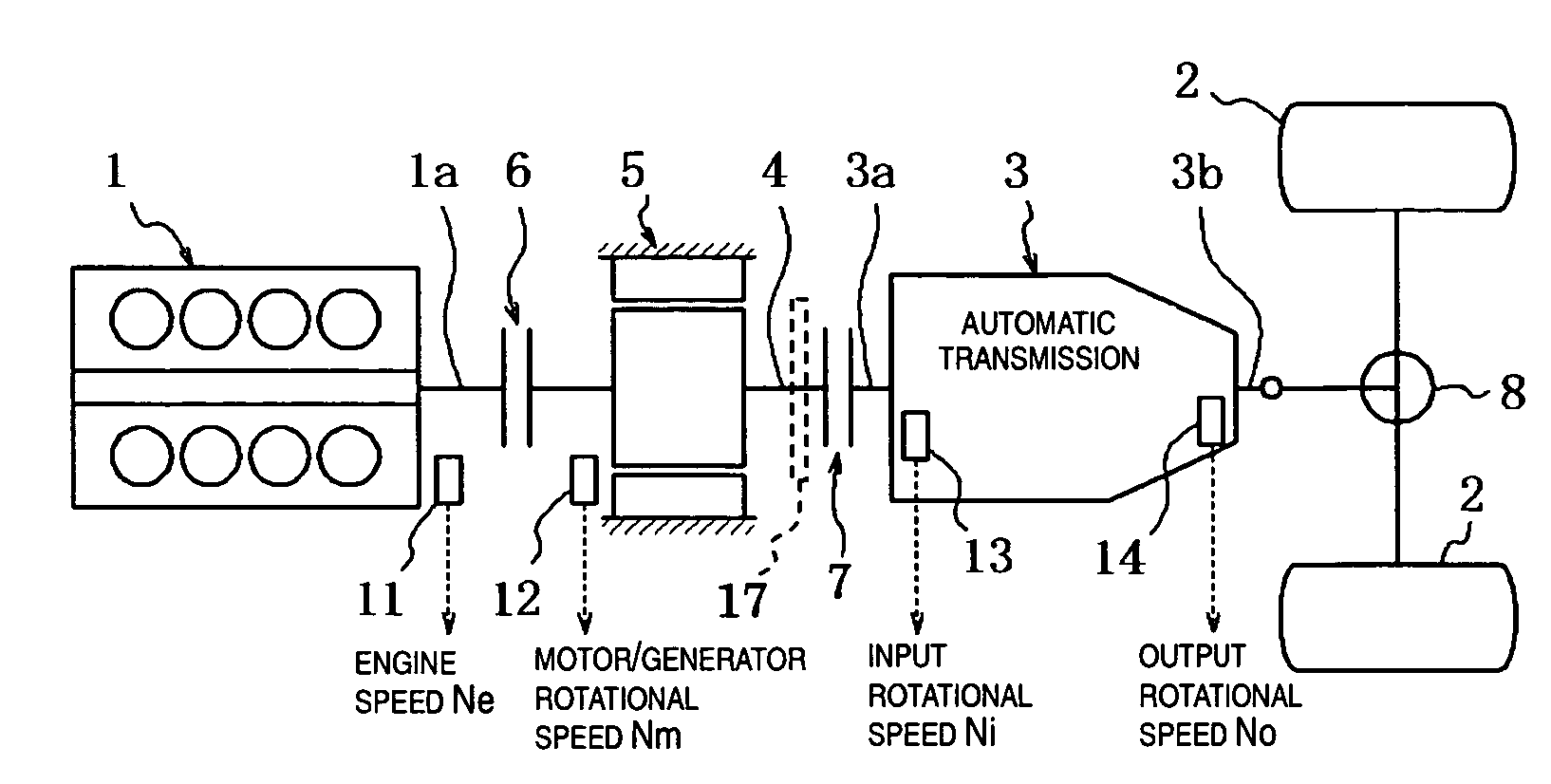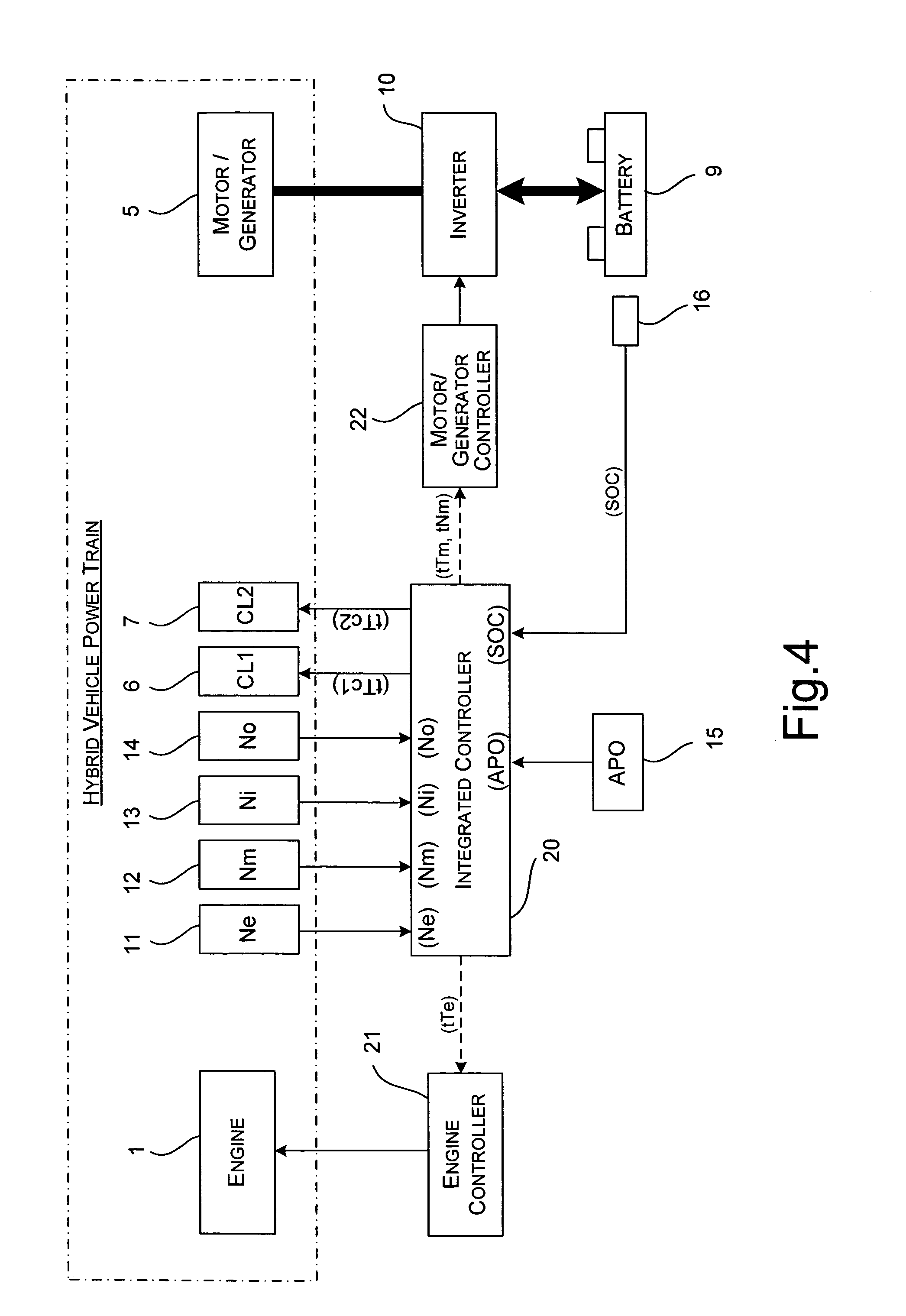Hybrid vehicle control system
a control system and hybrid technology, applied in the direction of propulsion using engine-driven generators, electric propulsion mounting, transportation and packaging, etc., can solve the problem of excessive torque transfer capacity of the second clutch, and achieve the effect of preventing inadvertent clutch slippag
- Summary
- Abstract
- Description
- Claims
- Application Information
AI Technical Summary
Benefits of technology
Problems solved by technology
Method used
Image
Examples
Embodiment Construction
[0033]Selected embodiment of the present invention will now be explained with reference to the drawings. It will be apparent to those skilled in the art from this disclosure that the following description of the embodiment of the present invention is provided for illustration only and not for the purpose of limiting the invention as defined by the appended claims and their equivalents.
[0034]Referring initially to FIGS. 1 to 3, a front engine / rear wheel drive vehicle (rear wheel drive hybrid vehicle) is illustrated in each of the Figures in which each of the hybrid vehicles is equipped with a hybrid vehicle control system in accordance with one preferred embodiment of the present invention. Basically, the hybrid vehicles of FIGS. 1 to 3 illustrate three examples of alternate power trains of hybrid vehicles in which the hybrid vehicle drive control system in accordance with the present invention can be applied. In these examples, each hybrid vehicle includes, among other things, an in...
PUM
 Login to View More
Login to View More Abstract
Description
Claims
Application Information
 Login to View More
Login to View More - R&D
- Intellectual Property
- Life Sciences
- Materials
- Tech Scout
- Unparalleled Data Quality
- Higher Quality Content
- 60% Fewer Hallucinations
Browse by: Latest US Patents, China's latest patents, Technical Efficacy Thesaurus, Application Domain, Technology Topic, Popular Technical Reports.
© 2025 PatSnap. All rights reserved.Legal|Privacy policy|Modern Slavery Act Transparency Statement|Sitemap|About US| Contact US: help@patsnap.com



